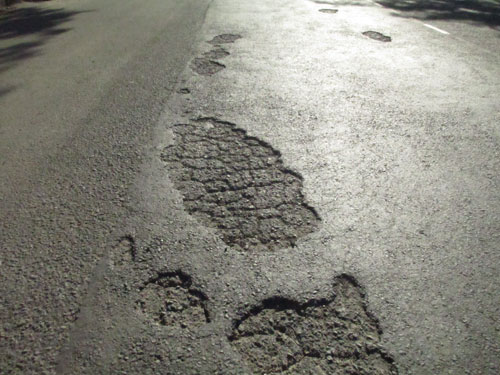Winchester’s recent discovery of a 200-year-old wooden road on Hyde Street unveils a fascinating chapter in urban infrastructure, showcasing the innovative solutions of the past. This hidden relic not only captures the ingenuity of early city planning but also reflects the creative adaptations made to address the demands of urban life in the 19th century.
Urban Challenges of the 19th Century
As Winchester’s population grew, so did the traffic of horse-drawn carriages, creating an unexpected consequence: noise. The combination of horse hooves and iron-rimmed wheels clattering on cobbled or stone-sett streets made city life increasingly noisy. This problem was particularly acute on Hyde Street, a main route into the city from the north, where traffic was constant. The excessive sound became a disturbance for residents and pedestrians alike, leading city planners to seek quieter alternatives to the traditional stone streets.

The Advent of Wooden Roads
Borrowing an idea from the city of Saint Petersburg, Winchester’s planners implemented wooden roads as a noise-reduction measure. These wooden roads were constructed from durable timber blocks, often pine or oak, which were chosen for their ability to absorb sound better than stone. Each wooden block was coated with a layer of bitumen to waterproof it, preserving the wood and shielding it from degradation due to horse urine and other environmental factors.

The addition of bitumen not only protected the wood but also contributed to a smoother, quieter surface, effectively reducing the noise produced by the traffic of the day. This early adoption of wooden block roads underscores Winchester’s openness to innovative infrastructure solutions, balancing practical urban needs with the comfort of city dwellers.
Wooden Roads Across the World
Winchester was not alone in adopting wooden roads; other major cities like London, New York, and Paris also experimented with wooden surfaces for similar reasons. In London, the use of wood became widespread, especially in bustling districts where noise and wear on horses’ hooves posed challenges. While wooden roads were effective in reducing noise and providing a smoother journey, their use gradually declined with the introduction of alternative road materials.
Transition to Macadam Roads
The advent of “Macadam” roads, a system developed by Scottish engineer John McAdam, marked the next evolution in road construction. Unlike wooden roads, Macadam roads used layers of crushed stone compacted to create a firm, durable surface that was more resistant to wear. Later, Edgar Hooley’s patented Tarmac—an enhancement that combined tar with crushed stone—transformed road building by creating a smoother, longer-lasting surface that better withstood the demands of motorized vehicles.

A Historical Legacy Rediscovered
The rediscovery of Winchester’s wooden road serves as a remarkable time capsule, preserving the legacy of a past era’s ingenuity in urban design. It highlights the careful consideration that went into making city life more bearable for both residents and animals, addressing challenges in ways that were both practical and forward-thinking. The reemergence of Hyde Street’s wooden road stands as a testament to early infrastructural adaptations and serves as a reminder of the evolutionary journey of road construction methods—from wood to stone, to modern asphalt and Tarmac.
Conclusion: A Window into the Past for Future Generations
This hidden relic on Hyde Street is more than a historical artifact; it embodies the spirit of innovation that characterized 19th-century urban planning. The discovery allows modern city planners, historians, and the public to appreciate the strategies used to make urban spaces quieter and more accessible. Winchester’s wooden road offers a unique perspective on how historical infrastructure can inspire present-day solutions for creating sustainable and livable cities, bridging past and future in a single, captivating discovery.
